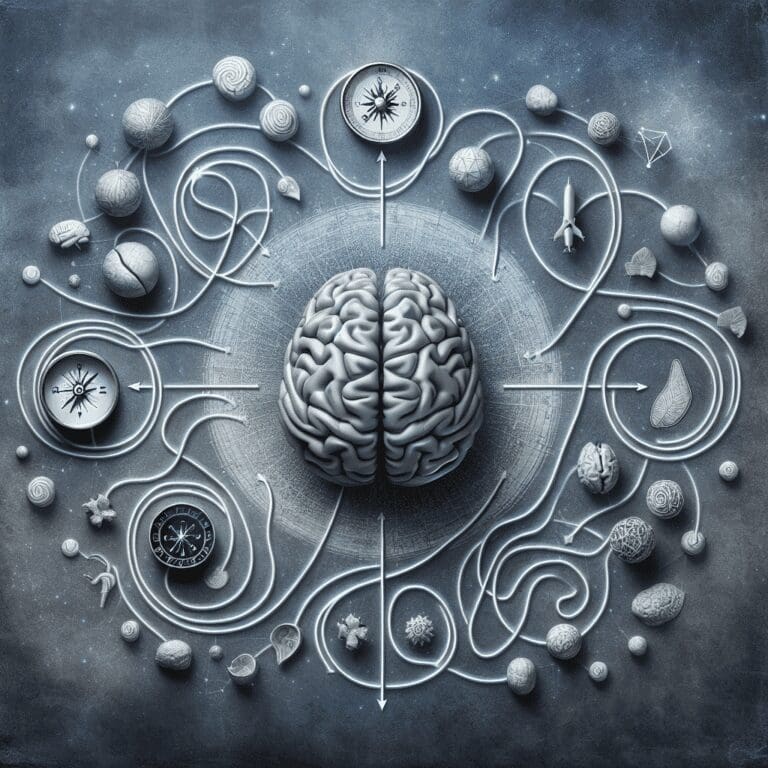Navigating the Unknown: How Personality Shapes Medical Decision-Making in the Face of Uncertainty

Introduction: Stepping Into the Maze of Medical Uncertainty Imagine stepping into a doctor’s shoes for a moment. Each day, countless patients walk through the door, bringing with them not just their ailments, but also a cloud of uncertainty. For general practitioners (GPs), navigating this uncertainty is part and parcel of daily life. But what if […]
Finding Dignity in Adversity: A New Approach for Motor Neurone Disease

Introduction: A Beacon of Hope Amidst Uncertainty Imagine being told you have a condition for which there is no cure, one that gradually strips away your ability to walk, speak, and eventually, breathe. This is the harsh reality for individuals diagnosed with Motor Neurone Disease (MND), a progressive neurological disorder that affects movement and muscle […]
Unraveling Social Perception: Autism and the Nuances of Irony

Introduction: A Peek into the Labyrinth of Communication Imagine you’re at a dinner party. The room is abuzz with chatter, laughter, and the occasional wry comment. You hear someone say, “Oh sure, because parking in a puddle was exactly what I wanted to do today!” Instinctively, you recognize the sarcasm—a layer of meaning that spices […]
How Childhood Stress Shapes Your Adult Mind

Introduction Imagine you are a child waking up each day to face a bully. This isn’t just any playground bully, but a relentless one who shapes the very essence of your experiences and reactions. This scenario, albeit distressing, mirrors the core of a groundbreaking study titled “Extended Effect of Chronic Social Defeat Stress in Childhood […]
Understanding Emotional Perceptions in Adolescents with High Functioning Autism: A Journey Through Brain Activity and Emoticons
Introduction: Emotions in the Digital Age Imagine scrolling through your social media feed and stopping at a friend’s post. You see words like “excited” and “happy” alongside a smiling emoticon. Instantly, you get the gist: your friend is over the moon about something. But what if this seemingly simple translation of emotions is not so […]
Unraveling the Spectrum: Unveiling Autistic Traits in Poland

Introduction: The Polish Journey into the Spectrum Imagine being in a room full of people, yet feeling miles away simply because your way of processing the world around you is uniquely different. For individuals with Autism Spectrum Disorders (ASD), this is often the reality. As we strive to create a more inclusive world, understanding these […]
Discovering the Genetic Puzzle: Autism, Head Size, and Inheritance

Introduction In the intricate world of autism spectrum disorder (ASD), where puzzles often outnumber pieces, new insights are continually shaping our understanding. This research paper titled “Mode of Genetic Inheritance Modifies the Association of Head Circumference and Autism-Related Symptoms: A Cross-Sectional Study“ embarks on a fascinating exploration. Picture stepping into a world where something as […]
Decoding Communication: How Early Social Experiences Shape Young Minds**

— Introduction: The Foundation of a Child’s Social World Imagine a bustling playground where children interact in their unique ways, sharing toys, ideas, and perhaps a few mischievous secrets. What drives their ability to connect, understand, and communicate with each other? As it turns out, these early social experiences play a profound role in shaping […]
Bridging the Gap: Navigating Health Care Barriers for Individuals with Intellectual Disabilities

Introduction Imagine navigating a complex health care system where your needs are not fully understood, your communication barriers are ignored, and discrimination overshadows your quest for care. This is the reality faced by many individuals with intellectual disabilities and their caregivers as they attempt to access the medical support they need. The research paper “Discrimination […]
Unveiling the Connections Between Autism and Schizotypy: Insights from Non-Clinical Populations

Introduction: Bridging the Gaps Between Two Complex Worlds Imagine navigating life where every social cue feels like a puzzle, or where thoughts dance unpredictably, leading you into the realms of creativity and bewilderment. These scenarios can reflect the experiences of those living with autism spectrum conditions (ASCs) and schizotypal traits, characteristics often associated with schizophrenia […]